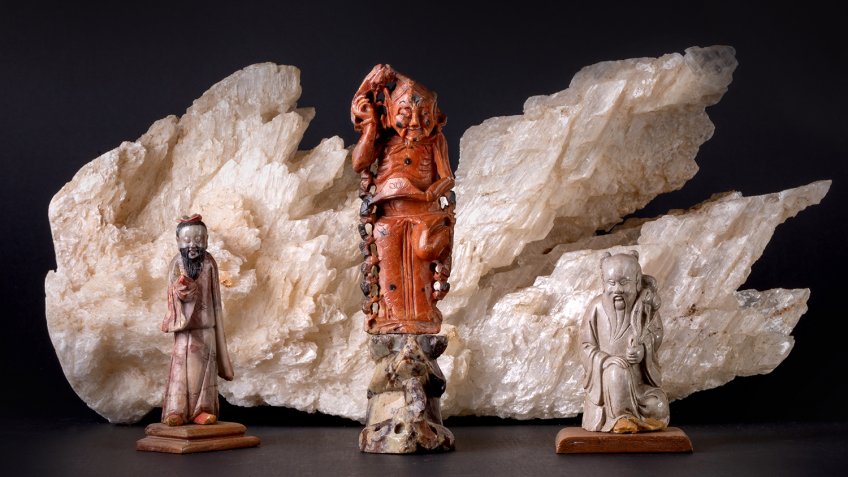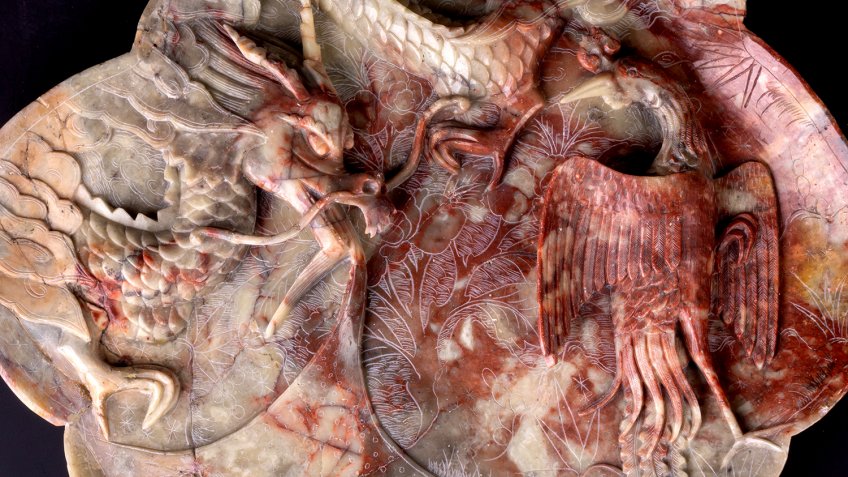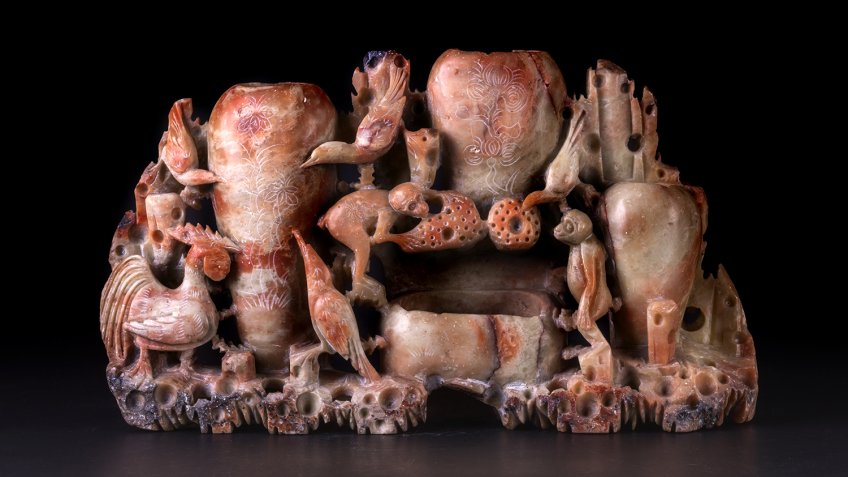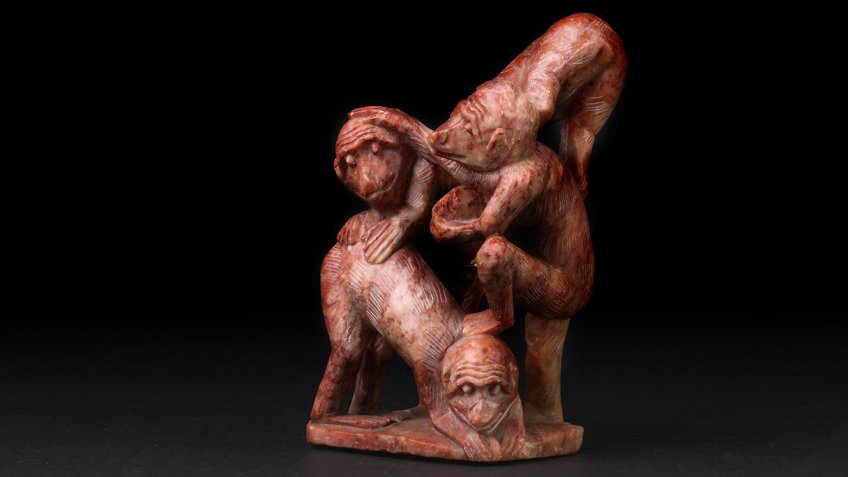
Items made of this stone are a real treasure of Russia. One of the stone’s most amazing features is that anyone can carve a picture or statue of it with a standard kitchen knife. This mineral, easily recognisable by its distinctive colour and softness, is called agalmatolite.
The stone became globally known because of the Tuvan legend. As it says, there was a dragon living at the foot of the mountains, next to the agalmatolite deposit. The beast kept local people in fear, but during the daytime no one saw it since the creature was afraid of sunlight. At nights, the dragon, however, used to leave the cave, kill people and burn their houses. Not a single person dared to rescue locals, but then a brave stonecutter decided to bring the wicked creature to an end. What he did is he carved an exact copy of the dragon from agalmatolite. That copy looked so real that when the sun shone the light on it, a wild cry was heard over the mountains - the dragon died. And people of Siberia appropriated a unique technique of mineral carving.
Identification of own works with real characters is an ancient tradition of Tuvan lapidary workers. Even now, masters think their figurines made of agalmatolite are animated. Before carving a particular statuette, stonecutter should ask what the mineral itself wishes. One should hold it in their hands, scrutinise it, and the stone will tell whether it wants to be an owl, a horse or a camel.
Tuvans believe agalmatolite is a sacred stone. Specimens they use to work on are mined manually, under a particular technology, and only in autumn or early spring - the soil must be frozen yet. Once the stones are selected and recovered, the workings get covered with earth so that human interference would not harm nature. Rock samples have to be processed immediately; otherwise, after a while they become solid.
Since the very ancient times, the stone has also been popular in the countries of South-East Asia, where it is also known as pagodite. Chinese people were making various amulets from it. When performing religious ceremonies, they often sacrificed animal figurines made of agalmatolite to the gods instead of living animals. The Chinese idolised god statues of agalmatolite. There was a common belief the mineral could connect people with the higher forces.
In the past, agalmatolite was used in medicine. People applied pieces of the stone to their joints and left them there for several hours, believing Chinese soapstone to be an efficient painkiller. If one would desire to make such medicine, it is still possible. The cure would be cheap as well, since prices on agalmatolite are quite low.
After baking, stone samples become very hard. Due to being heat-resistant, they are highly demanded as refractory materials and in electrical engineering. Objects made of the mineral are in demand as well. Prices mostly depend on the skills and talent of a particular master; true masterpieces may cost up to several thousands of dollars.


